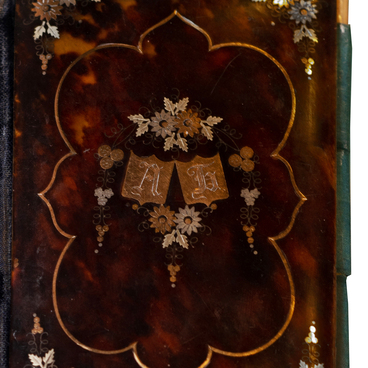Ivan Denisov (who lived from 1867 to 1928) — the author of this study from the Boratynskiy Museum — spent most of his life in Kazan. He was a well-known painter and portrait painter in the city. But it was not a case of real success. In the late 1880s and early 1890s, Denisov was a non-resident student of the Higher Art School at the Academy of Arts. His graduation work was a painting ‘The Perspective View of the Church of the Imperial Academy of Arts’.
After graduation, the artist lived and worked in his hometown Kazan. He was one of the founders and first teachers of the Kazan Art School, which opened its doors in 1895. There Denisov supervised classes of elementary painting and watercolors. His lessons were attended by Ksenia Boratynskaya, the granddaughter of the poet Yevgeniy Boratynskiy, who enrolled in the Kazan Art School in 1897 as a non-resident student.
She wrote in her memoirs about the atmosphere at school: ‘I found my companions, I found the society that satisfied me. I met people, I learned from them, and for my part, I spoke, I persuaded, I defended my views, I hesitated about them, I influenced the weak and I listened to the strong. In short, I have immersed myself in a multifaceted interesting life that I have never known until now. Every day I’d go to school at nine o’clock and work there on watercolors… and from five to seven we had evening pencil classes, and we drew cast models’.
In her memories of Ksenia of Boratynskaya dedicated one line to Denisov: ‘He was a mediocre artist and mediocre teacher’.
The sketch from the museum’s collection depicts one of the most beautiful family churches in Petersburg - the Temple of the Holy Martyr Catherine in the building of the Imperial Academy of Arts. The church was founded in 1765 with the participation of Catherine II. The church was built as part of the building of the academy. Its interior is inspired by late classicism designed by the architect Konstantin Ton. After the Revolution of 1917, the temple was closed. Services resumed only in 1991.
After graduation, the artist lived and worked in his hometown Kazan. He was one of the founders and first teachers of the Kazan Art School, which opened its doors in 1895. There Denisov supervised classes of elementary painting and watercolors. His lessons were attended by Ksenia Boratynskaya, the granddaughter of the poet Yevgeniy Boratynskiy, who enrolled in the Kazan Art School in 1897 as a non-resident student.
She wrote in her memoirs about the atmosphere at school: ‘I found my companions, I found the society that satisfied me. I met people, I learned from them, and for my part, I spoke, I persuaded, I defended my views, I hesitated about them, I influenced the weak and I listened to the strong. In short, I have immersed myself in a multifaceted interesting life that I have never known until now. Every day I’d go to school at nine o’clock and work there on watercolors… and from five to seven we had evening pencil classes, and we drew cast models’.
In her memories of Ksenia of Boratynskaya dedicated one line to Denisov: ‘He was a mediocre artist and mediocre teacher’.
The sketch from the museum’s collection depicts one of the most beautiful family churches in Petersburg - the Temple of the Holy Martyr Catherine in the building of the Imperial Academy of Arts. The church was founded in 1765 with the participation of Catherine II. The church was built as part of the building of the academy. Its interior is inspired by late classicism designed by the architect Konstantin Ton. After the Revolution of 1917, the temple was closed. Services resumed only in 1991.



